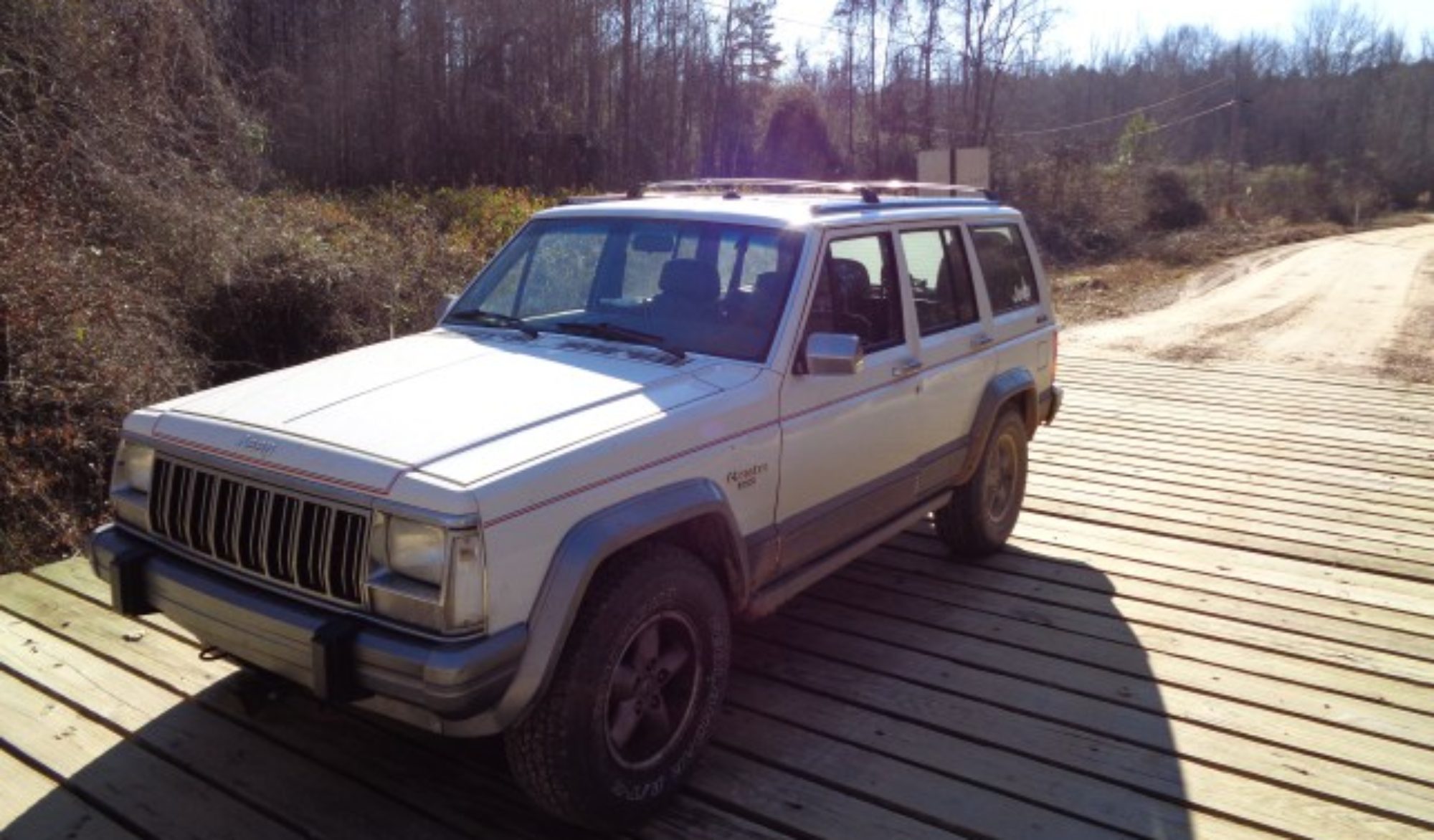Jeep Cherokee AC rebuild
My old AC compressor failed in spectacular fashion while driving on the interstate. There was a huge bang form under the hood and the engine sputtered until it cleared itself of all the Freon that it sucked in through my K&N filter mounted right behind the AC compressor.
Later, I found a big hole in the side of the compressor. I also found one of the compressor pushrods under the AC mount. I guess that is what made the hole.
I picked up a used compressor off Ebay and a new dryer from Autozone. Found Freon at Big Lots and got a bottle of PGA oil and a flush kit from the parts store.
To remove the broken compressor, I first loosened the belt. In my 1991 Cherokee, than means loosening the power steering pump. I don’t have an air box anymore so access to the adjuster is easy. All the bolts are turned by 13mm wrenches.
With the belt loose, I removed the four bolts that hold the compressor to the engine adapter. These tend to gall so I used an impact wrench to remove them. I have had them break by just using a ratchet when pulling compressors from the junkyard.
I also disconnected the high and low pressure lines at the back of the compressor. There was no need to bleed the system as it was all gone through the hole in the compressor.
I lifted the compressor to get better access to the wire and once it was loose, I removed the compressor. Next I removed the lines from the drier.
Removing the 13mm nut that holds the drier to the frame rail was the most difficult part of the removal process. I ended up using a shot 13mm socket on a swivel and lots of extensions. Access is difficult due to the high pressure hose that runs right across the top of the nut.
Once the old drier was out I began flushing the system. I flushed so that any particles form the failed compressor would be pushed back to the compressor connections. Some black and gray dust came out but no metal shavings as I feared might be there. I elected to reuse the expansion valve and not remove it. I back flushed through it. Once the flush ran clear, I used compressed air to dry the system.
I then began stripping the old drier. The low pressure switch and an adapter on the inlet side had to be swapped over to the new drier that was not exactly the same size and shape as the original. I used the new O rings provided to reassemble. I started the lines one but did not tighten them down. I then fought with the mounting nut and got the drier secured to the body. Then I finished tightening down the lines. I then reconnected the wire to the low pressure switch.
I filled the replacement compressor with PGA oil. I could not get all of it into the compressor before it started pumping out the discharge. I slowly rotated the compressor as I added oil to get it in. I added the remainder of the 8 oz bottle to the suction hose.
Next, I set the compressor in place. Again, I got the lines started onto the threads before putting bolts in the compressor. I also installed new O rings on the ends of the lines.
I put a dab of anti-seize on teach bolt before setting it in place. Once the compressor was in place, I tightened the lines on the back. I would like to say I reconnected the wire at this point, but I actually forgot until later when trouble shooting why the clutch was not pulling in.
I then connected my vacuum pump and began drawing a vacuum on the system. While waiting, I put the drive belt back in place and set the tension. I also had time for an oil change as well.
Once the system was vacuumed for 20 minutes, I checked to make sure it held vacuum. It did so I proceeded to put in the first can of R134. The Jeep compressor has a service valve. I set it about the middle point for both vacuum and installing the Freon. I use an old water faucet handle to turn the ¼ inch square valve stem.
A second can of Freon brought the pressures in line. I was careful to close the service valve and replace the caps as I disconnected my gauge set. It was nice to have cold air again. There was a big puddle of condensate on the garage floor by the time I had all the Freon installed.
